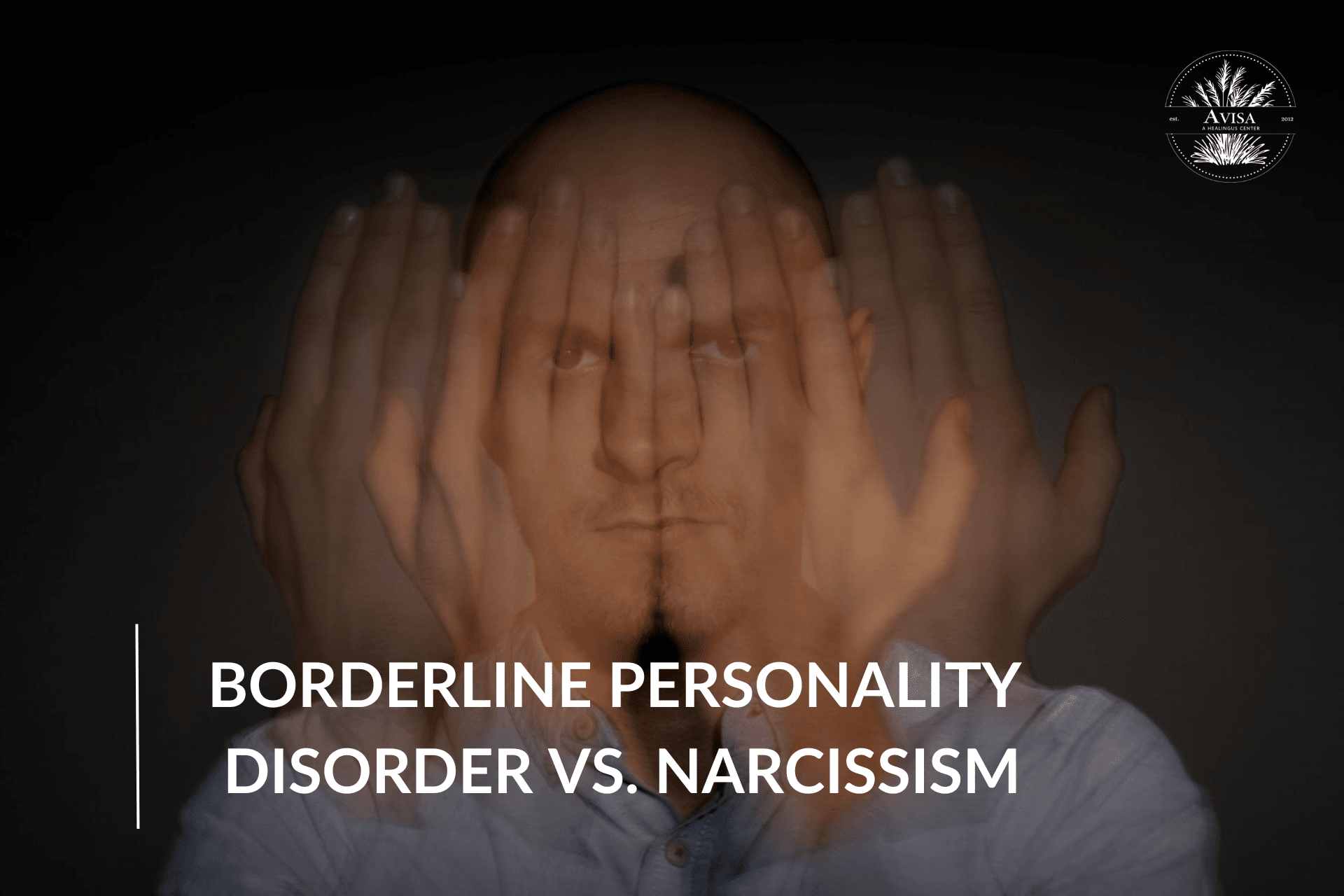Imagine living in a world where your emotions roller coaster never gets off track. On the one hand the relentless search for approval; on the other the relentless seeking to use relationships to get what you want. As a result, borderline personality disorder (BPD) and narcissism can be difficult for many to make sense of due to such layered behavior. In fact, research indicates that 13% of people with BPD also exhibit narcissistic personality traits, a number that can climb as high as 39% in some circumstances.
In this blog, we’ll simplify complicated disorders like borderline personality disorder and narcissism, explain their key differences, existing treatment options along with the coping strategies if these disorders coexist.
Your Mind Is Your Home, Make It a Safe Place Again
You weren’t meant to live in chaos, self-doubt, or endless emotional pain. rough DBT for emotional stability, CBT for thought transformation, and Schema Therapy for deep-rooted healing, you can reclaim control of your life.
What is Borderline Personality Disorder (BPD)?
At any given point in time, 1.6% of adults struggle with borderline personality disorder in the U.S. It’s an intense mental health condition categorized by rapid and intense mood swings and fear of abandonment, which often leads to unstable relationships and a distorted self-image.
Take a simple example of going out with one of your close friends. If the plan succeeds, you are happy, but if the plan cancels, you suddenly feel betrayed, sad, and rejected.
People with this disorder often:
- Feel a fear of getting abandoned by the group- be it a real or a perceived notion
- Idealize someone and devalue them when they fail to meet their expectations
- Struggle to identify who they are and how they want to build the future
- Indulge in impulsive behaviors like binge eating, mindless scrolling, reckless buying, and it can even lead to self-harm
What is Narcissistic Personality Disorder (NPD)?
In the U.S., around 1 in every 200 people are diagnosed with Narcissistic Personality Disorder, which is more prevalent in males, as 75% of them are men. It’s a mental health condition where the person has an excessive need for admiration followed by a lack of empathy for others.
People with narcissist traits:
- Believe they deserve special treatment and always want to be the center of attention
- Faces difficulty recognizing others’ emotions
- Find it difficult to handle criticism
- Use others for their good without pondering upon the consequences
What is a Borderline Narcissist?
We often use Borderline Narcissist for people portraying both Borderline personality disorder and Narcissistic personality disorder. Understanding this from an example more prevalent in real life would help us get better clarity and differentiate between borderline personality disorder vs. narcissism in individuals like these. Let’s understand it in 3 phrases:
1. Idealization phase
Suppose you recently started a relationship, and because of the efforts from both ends, you start thinking that this is the best thing that happened to you. You start seeing the other person as “perfect.”
2. Devaluation phase
When the relationship grows, and there’s a minor inconvenience, a person with borderline narcissistic personality starts to throw tantrums and blame the other person for every “wrong” that happened. They start “de-valuing” someone in and out.
3. Low self-esteem phase
The final stage that a borderline narcissist faces is the feeling of unworthiness and fear of getting abandoned by the group. Hence, when things seem out of control, they begin manipulating others to stay in their lives and always have a victim mentality.
Borderline Personality Disorder vs. Narcissism: Overlapping Symptoms
It’s difficult to see how both the disorders exhibit similar symptoms until seen particularly. Some of the commonly seen overlapping symptoms in borderline personality disorder vs. narcissism are:
1. Emotional Instability
People with BPD and NPD both exhibit intense emotional responses and can find it difficult to navigate and manage their emotions in the long run. People with BPD often associate themselves with feelings of abandonment, whereas narcissists experience strong emotions of anger or distress whenever someone challenges their self-image.
2. Facing difficulty with relationships
People with borderline personality disorder vs. narcissism often find it difficult to navigate through relationships because they idealize other people and de-value them at the other moment.
3. Sensitive to handling criticism
The methods might slightly be different from one another, but people with BPD and NPD can’t handle criticism or rejection and see that as a source of motivation to become better. Instead, they try to control the other person by blackmailing, self-harming, or showing some withdrawal symptoms.
Borderline Personality Disorder vs. Narcissism: Key Differences
While characteristics of borderline personality disorder vs. narcissism might look similar, we can notice some key differences:
1. Self-image Issues
While people with BPD might experience a fragile and unstable self-image, like changing careers in order to find what’s stable for them in the long run, people showing off narcissistic personalities have inflated their self-image to an extent where they believe they deserve to be treated specially and everyone should see them as superior.
2. Level of Empathy
People with BPD often are more empathetic but unable to manage the outbursts that can happen, making the situation worse. However, people with NPD showcase a lack of empathy while taking advantage of others’ vulnerability.
3. Primary Cause
BPD arises from the fear of getting abandoned, while NPD arises from giving too much importance to oneself.
Existing Treatment Options for BPD & NPD
Every disorder has a treatment plan best suited for short-term and long-term recovery. Based on the symptoms and level of effect it had on your brain, here are some treatment options for borderline personality disorder vs. narcissism:
Treatment Options for Borderline Personality Disorder
1. Dialectical Behavior Therapy (DBT):
It’s a form of cognitive-behavioral therapy (CBT) specifically developed for BPD, which focuses on helping individuals reduce self-harm behaviors, regulate their emotions, and improve interpersonal relationships. Mindfulness, self-soothing behavior, and the ability to handle various situations are some of the key skills accompanied by DBT.
2. Cognitive Behavioral Therapy (CBT):
CBT can help individuals with BPD identify and change negative thought patterns and behaviors. While DBT is often the treatment of choice for BPD, CBT can still be effective for addressing emotional instability and improving coping skills.
3. Mentalization-Based Therapy (MBT):
MBT focuses on helping individuals understand and interpret their own and others’ emotions and thoughts. This treatment can be helpful for individuals with BPD, who often struggle with emotional regulation and have difficulty understanding the intentions and feelings of others.
Treatment Options for Narcissistic Personality Disorder
1. Schema Therapy:
It’s a more in-depth form of therapy that helps individuals identify and change patterns that have framed their personalities in their minds. It involves identifying early life experiences that may have contributed to the formation of an exaggerated sense of self-importance.
2. Psychodynamic Psychotherapy
This therapy focuses on exploring past experiences and unconscious processes to help individuals with NPD understand the origins of their behaviors and emotions. It can lead to greater self-awareness and a more empathetic way of relating to others.
3. Group Therapy
Group therapy may help individuals with NPD by providing opportunities to develop empathy, improve social skills, and receive feedback from others. This type of therapy can be challenging for individuals with NPD due to their sensitivity to criticism, but it can also foster personal growth.
How Avisa Recovery Can Help You with Personality Disorders?
Whether it’s borderline personality disorder or narcissism, both are intense mental health conditions that make an invisible hole in your brain if not treated timely. At Avisa Recovery, we pledged to help individuals with various mental health conditions to give themselves and their loved ones the best lives they always wanted. From specific treatments like DBT, CBT, or Schema therapy to more holistic therapies and group sessions, we understand what exactly a person requires according to their situation.
If you or someone close to you is finding it challenging to think, act, and live life, we are here to listen to you and suggest the best option to get started. Just add your basic details, and our team will contact you with more information. Let’s be honest: change is important, but at times, it’s difficult to navigate our natural responses and see them as disorders.
Tired of fighting addiction and mental health struggles?
Ignoring both deepens the struggle. Our holistic approach—detox, therapy, and medication-assisted treatment—can help you heal. Take the first step today.
FAQs: Borderline Personality Disorder vs. Narcissism
Q: What is the difference between BPD and NPD?
A: BPD starts with emotional instability and a fear of abandonment, while NPD involves a grandiose self-image and a need for admiration mistaken for narcissism.
Q: Can BPD be mistaken for narcissism?
A: Yes, BPD can be mistaken for narcissism due to overlapping traits like emotional instability and difficulty in relationships.
Q: How do I know if I’m a narcissist?
A: Every individual and their situation is different, but if you have a grandiose sense of self-importance, lack empathy, and crave admiration from others, you may have narcissistic traits.
Q: Do people with BPD have empathy?
A: People with BPD can have empathy, but emotional instability may make it difficult for them to show it in relationships consistently.
Q: How can I get the appropriate treatment if I’m a borderline narcissist?
A: Being a borderline narcissist means you showcase the traits of borderline personality disorder vs. narcissism; hence, seeking therapy such as DBT for emotional regulation or CBT for narcissistic traits can help manage both BPD and narcissistic tendencies.











